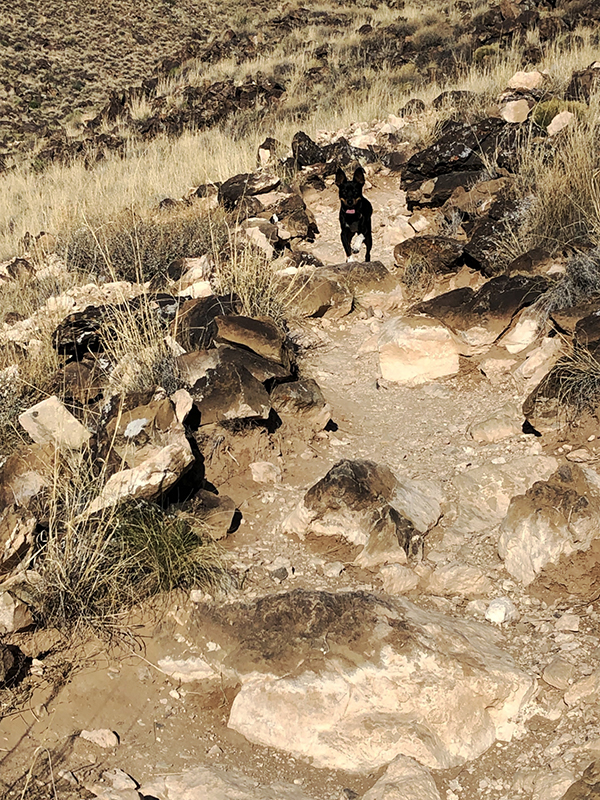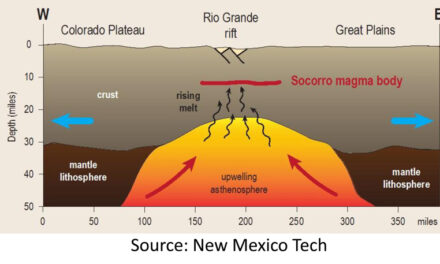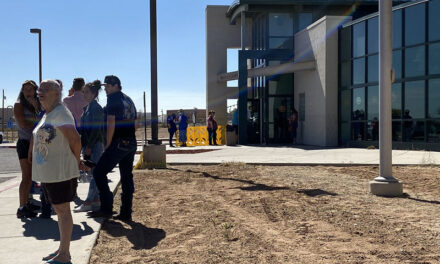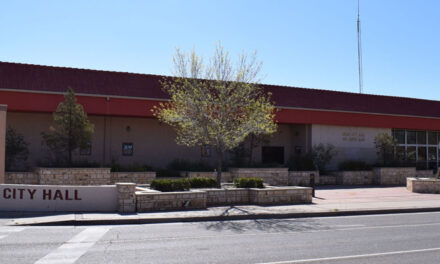In the first section on desert weathering (Valencia County News-Bulletin, Feb. 2, 2023), this column commented on the dark desert varnish that is prevalent in the southwestern U.S. and that provided the canvas for many petroglyphs in New Mexico.

Carbonate coating along El Cerro de Los Lunas trail.
This second part will present the white mineral coatings on rocks that can often be observed on the rocks at El Cerro de Los Lunas and Tomé Hill, and many rocks found around residences and ranches in the County.
Could it be formed by depositing from groundwater? White deposits can be found on top of Tomé Hill and El Cerro de Los Lunas, where no groundwater is flowing, so groundwater is not the mechanism for this deposition. It could be that acidic rainwater would dissolve minerals from the rocks and then deposit the coating. Or that coating is formed some other way. Knowledgeable geologists from New Mexico Tech provided the basic clues.
Rainwater in many parts of the world and the eastern U.S. is acidic. However, rainwater in the southwestern U.S. is not acidic and would have only limited ability to leach calcium from solid rocks such as the volcanic rocks of Tomé Hill. Moreover, the white coating is observed in some parts of New Mexico where the rocks contain very little calcium.
These observations indicate that the carbonate coating is not created by dissolving calcium from the rocks on which it is found.

Carbonate coated boulder at Huning Ranch Park in Los Lunas.
It turns out that the dust in the southwest is very high in calcium (you can vinegar-test soil around you in the county). When summer monsoon rains come and rainwater percolates in the warm soil, it dissolves the abundant calcium, then evaporates quickly, leaving the calcium carbonate coating around sand grains, gravel, or rock in the shallow soil.
When hiking Tomé Hill or El Cerro de Los Lunas, you will observe the white carbonate engulfing
the base of rocks or filling cracks in the rocks. When erosion or excavation (such as along man-made trails) expose the deeper rocks, the white coating that what was once shallowly buried is now visible.
Thus the white coating we observe around the county reminds us of geochemical action from thousands of past monsoon rains.
(Paul Parmentier, a certified professional geologist retired from California and living in Los Lunas, shares the rich geologic features in Valencia County. He earned a Bachelor of Science degree in geology from Belgium and a master’s degree in geochemistry from Japan. The Geology Landscapes of Valencia County are featured monthly.)
















